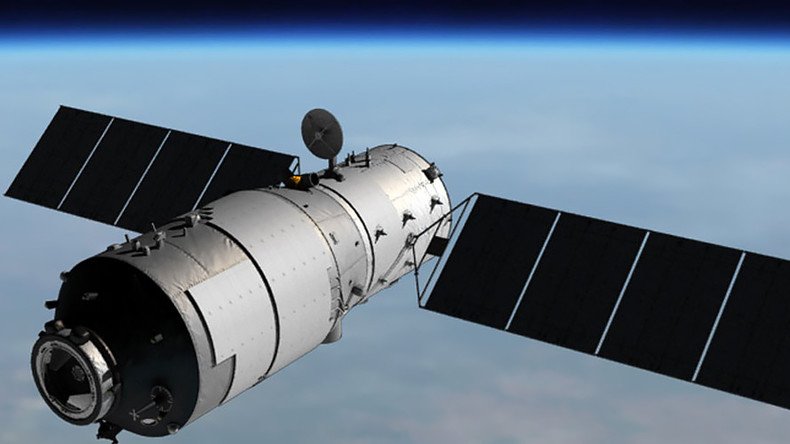Chinese space station to come crashing back down to Earth

China’s Tiangong-1 or ‘Heavenly Palace’ space station looks set for a fiery end some time in the next 12 months, threatening to rain down debris on a yet-to-be-confirmed location here on Earth.
Launched in 2011, the 8.5 tonne (8,500kg) Chinese space station has been in a decaying orbit since it ceased functioning on March 16, 2016. Its current average altitude is roughly 349km (216 miles) above the Earth and it is dropping at a rate of approximately 160 meters per day.
“Now that [its] perigee is below 300km and it is in denser atmosphere, the rate of decay is getting higher,” said Jonathan McDowell, an astrophysicist from Harvard University, as cited by The Guardian. “I expect it will come down a few months from now – late 2017 or early 2018.”
The majority of the craft will burn up in the atmosphere, however, several pieces weighing up to 100kg are still expected to slam into the Earth.
China's #Tiangong-1 space station is falling, 'pose little threat to people on the ground' - officials https://t.co/A7OMTJg7yEpic.twitter.com/Bt1E9VGPMZ
— RT (@RT_com) September 20, 2016
China recently notified the UN Committee on the Peaceful Uses of Outer Space that it expects the station to crash between October 2017 and April 2018. While the Chinese government has vowed to closely monitor the station’s descent, it’s anyone’s guess as to where it will ultimately crash down.
“The probability of endangering and causing damage to aviation and ground activities is very low,” Chinese's CNSA space agency said.
Highly variable atmospheric conditions could literally mean the difference between debris falling on one continent or another, and the likelihood of injury is remote. For context, the Soviet Union's 20-tonne Salyut 7 space station and Cosmos 1686 spacecraft broke up over Argentina but no injuries were reported.
“You really can’t steer these things,” McDowell said in 2016, as cited by The Guardian.
“Even a couple of days before it re-enters we probably won’t know better than six or seven hours, plus or minus, when it’s going to come down. Not knowing when it’s going to come down translates as not knowing where it’s going to come down.”












